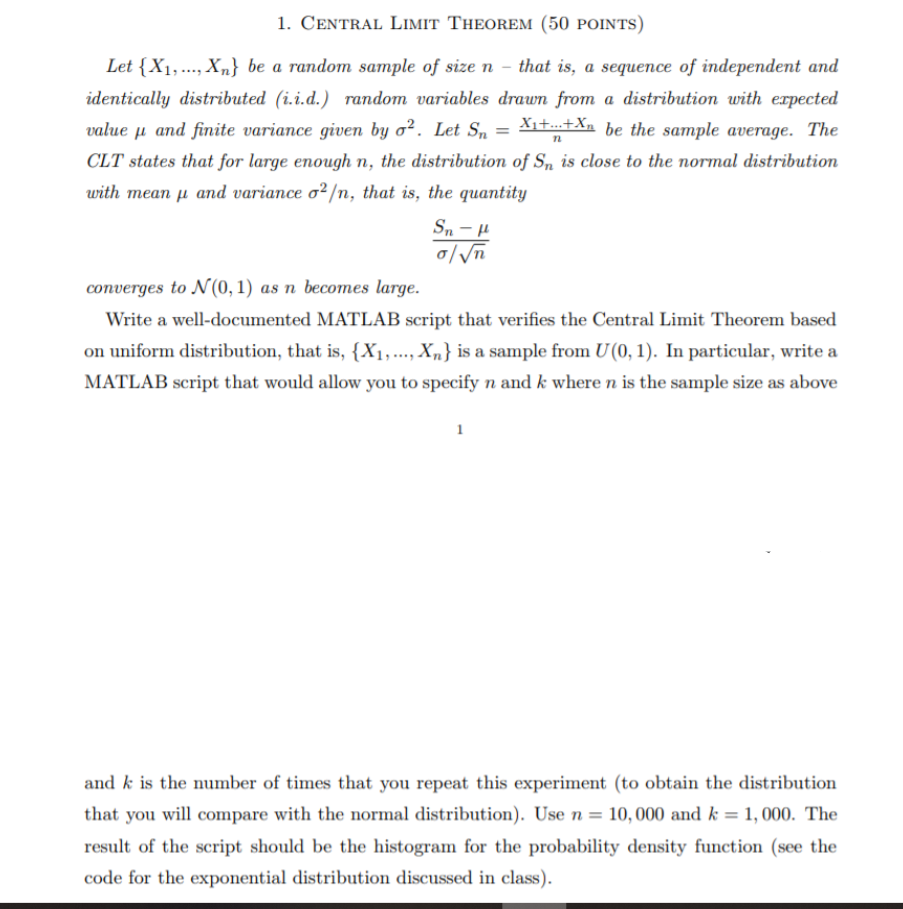
1. CENTRAL LIMIT THEOREM (50 POINTS Let (Xi,, Xn] be a random sample of size n -that is, a sequence of independent and identically distributed (i.i.d.) random variables drawn from a distribution with erpected value and finite variance given by 2. Let Sn-xitntxa be the sample average. The CLT states that for large enough n, the distribution of Sn is close to the normal distribution with mean and variance ajn, that is, the quantity converges to N(0, 1) as n becomes large Write a well-documented MATLAB script that verifies the Central Limit Theorem based on uniform distribution, that is, (XXn is a sample from U(0, 1). In particular, write a MATLAB script that would allow you to specify n and k where n is the sample size as above and k is the number of times that you repeat this experiment (to obtain the distribution that you will compare with the normal distribution). Use n = 10,000 and k = 1,000. The result of the script should be the histogram for the probability density function (see the code for the exponential distribution discussed in class) 1. CENTRAL LIMIT THEOREM (50 POINTS Let (Xi,, Xn] be a random sample of size n -that is, a sequence of independent and identically distributed (i.i.d.) random variables drawn from a distribution with erpected value and finite variance given by 2. Let Sn-xitntxa be the sample average. The CLT states that for large enough n, the distribution of Sn is close to the normal distribution with mean and variance ajn, that is, the quantity converges to N(0, 1) as n becomes large Write a well-documented MATLAB script that verifies the Central Limit Theorem based on uniform distribution, that is, (XXn is a sample from U(0, 1). In particular, write a MATLAB script that would allow you to specify n and k where n is the sample size as above and k is the number of times that you repeat this experiment (to obtain the distribution that you will compare with the normal distribution). Use n = 10,000 and k = 1,000. The result of the script should be the histogram for the probability density function (see the code for the exponential distribution discussed in class)







